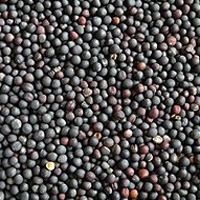Factors causing yield gap in rape seed production in the eastern of Mazandaran province, Iran

Accepted: 14 November 2019
HTML: 48
All claims expressed in this article are solely those of the authors and do not necessarily represent those of their affiliated organizations, or those of the publisher, the editors and the reviewers. Any product that may be evaluated in this article or claim that may be made by its manufacturer is not guaranteed or endorsed by the publisher.
The reduction of yield gap and achievement yield potential of oil plants make a significant contribution to yield increases and oil production in developing countries. This research was carried out to investigate the factors causing yield gap associated with rape seed crop management in the Neka region, east of the Mazandaran province, Iran, through a field study during 2015-2016 and 2016- 2017. Boundary line analysis (BLA) was only applied to crop management practices/inputs, e.g. sowing date and rate, fertilizer applications, etc. Boundary lines were fitted to the edge of the data cloud of crop yield versus management variables in data. The average yield in 100 farms was 2051 kg/ha. According to findings of BLA, an average yield, based on the optimum level of the 14 studied variables, was 3032 kg/ha with a 981 kg/ha yield gap per hectare. The average relative yield and relative yield gap for the 14 investigated variables were 68.35% and 31.65%, respectively. Therefore, it can be concluded that the use of the boundary line analysis in yield gap studies can clearly show the yield responses to management factors and calculate the possible potentials. Thus, cultivation practice management of the studied variables in farmers’ fields can lead to increased yield and reduced yield gap.
How to Cite
PAGEPress has chosen to apply the Creative Commons Attribution NonCommercial 4.0 International License (CC BY-NC 4.0) to all manuscripts to be published.

 https://doi.org/10.4081/ija.2020.1280
https://doi.org/10.4081/ija.2020.1280



